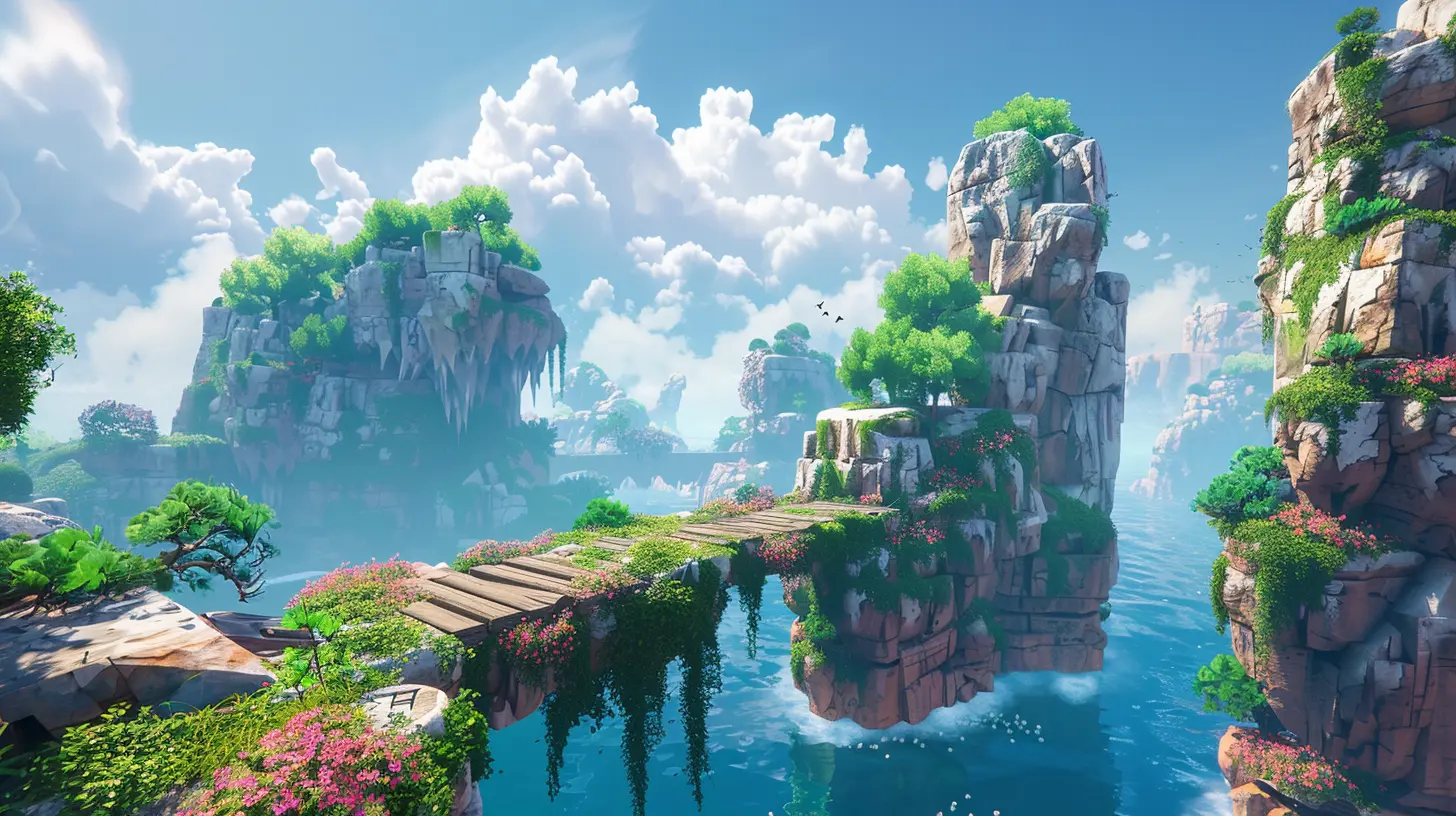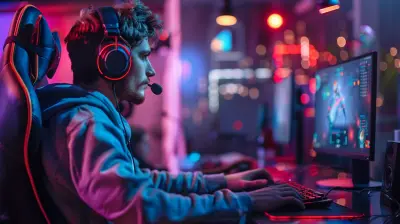Balancing Graphics with Performance: Cross-Platform Games That Look Great Everywhere
3 November 2025
Let’s face it—when it comes to gaming, we all want our cake and to eat it, too. Smooth frame rates and jaw-dropping visuals? Yes, please. But achieving that perfect balance, especially across multiple platforms, can feel like chasing a unicorn in a thunderstorm. Some games look phenomenal on ultra-settings on a high-end PC but fall apart visually on your average smartphone or struggle on an older console.
That’s where the art and science of balancing graphics with performance really shines. Today, we're diving deep into how developers have mastered the tightrope walk of making cross-platform games that look stunning—and run buttery smooth—regardless of where you're playing. Buckle up, cause we’re breaking it all down.
Why Balancing Graphics and Performance Matters
Ever fired up a game on your console and noticed it looks nothing like the trailer you saw online? You’re not alone. Game studios often have to compromise visuals to ensure smooth gameplay across a variety of devices—after all, not everyone has a beast of a gaming PC.Cross-platform gaming adds another layer of complexity. Developers now aim for performance parity across PCs, consoles, and mobile devices. And let’s not forget cloud gaming and the Nintendo Switch’s unique hardware constraints. It's like trying to host a gourmet dinner for guests with wildly different appetites and dietary needs. Hard? Absolutely. Impossible? Not anymore.
The Core Challenge: One Game, Many Systems
Every platform has its quirks:- PCs offer more raw power but come with a billion possible configurations.
- Consoles have fixed specs but are easier to optimize for.
- Mobile devices? Great for reach, but limited in horsepower.
So how do developers make one game run on all these systems without looking like pixel soup on one and a Hollywood movie on another?
They tweak. They optimize. And they get real clever.
Techniques Developers Use to Balance Graphics and Performance
Let’s peek behind the curtain and see how the pros work their magic. These aren’t just buzzwords—they're the nuts and bolts of why your favorite cross-platform game looks good on everything from a gaming rig to a handheld device.1. Scalable Graphics Settings
This is the bread and butter of balancing. Most cross-platform games feature customizable settings for texture quality, shadows, resolution scaling, anti-aliasing, and more.- On PC: You can tweak every setting to get the best frame rate.
- On Console: Devs pre-tune the settings to max out performance.
- On Mobile: The game auto-detects your specs and adjusts accordingly.
Ever seen “Performance Mode” or “Quality Mode”? That’s the game letting you choose whether you want smoother gameplay or better visuals. It’s like picking between a sports car and a luxury sedan—both get you there, just with different vibes.
2. Dynamic Resolution Scaling
This is a game-changer, literally. Instead of locking resolution (e.g., always 1080p), the game adjusts resolution on the fly to maintain frame rate. If there's a lot happening on screen (think explosions or crowded battle scenes), the resolution dips temporarily, then scales back up when things cool down.You might not even notice it, but your eyes and your GPU are silently shaking hands in harmony.
3. Level of Detail (LOD) Optimization
Ever noticed how objects far off in the distance look kinda fuzzy, but get sharper as you move closer? That’s LOD in action. Developers use it to reduce the processing load without sacrificing visuals where it matters most—right in front of you.It’s kind of like how your brain tunes out the background noise in a busy café so you can focus on your friend spilling the tea.
4. Texture Streaming & Efficient Asset Loading
Instead of loading every texture at once, games now stream in assets as needed. It's a bit like how Netflix buffers the next few seconds instead of downloading the whole movie upfront.Smarter memory management means better performance, especially on devices with limited RAM.
5. Engine Optimization
Many cross-platform games now use versatile engines like Unreal Engine and Unity, which offer multi-platform support baked in.Unreal Engine 5, for example, includes features like Nanite (for handling insane levels of detail) and Lumen (for realistic lighting) while still allowing scalability across platforms. Pretty slick, right?
Cross-Platform Games That Nailed It
Now let’s talk about the real MVPs—games that thread the needle like pros. These titles have managed to offer exceptional visual fidelity while maintaining smooth performance on various platforms. Let’s give credit where it’s due.1. Fortnite
Say what you will about its cartoony visuals, but Fortnite knows how to play the long game. It runs across nearly every platform—from high-end PCs to smartphones—and looks good doing it.Epic Games uses Unreal Engine tech to dynamically scale visuals based on your device. On a PS5 or RTX 3080-equipped PC? You get high-res textures and ray tracing. Playing on a Nintendo Switch? Still smooth, still vibrant.
2. Genshin Impact
This open-world RPG by miHoYo is a marvel of optimization. Whether you’re playing on PC, PS4/PS5, or mobile, Genshin Impact keeps things consistently stunning.It uses stylized graphics that lean into art direction instead of relying purely on high-res textures. That’s a smart move—it keeps performance manageable without sacrificing immersion. Plus, regular performance updates keep it fresh across devices.
3. Apex Legends
Respawn nailed the cross-play aspect while maintaining competitive fidelity. It runs smoothly on last-gen consoles, sparkles on the PS5/Series X, and even holds its own on the Switch.By scaling back particle effects and optimizing audio/visual rendering for each device, Apex keeps the action fluid and the playing field level. Nobody wants lag when they’re in a shootout, right?
4. Rocket League
This one's a case study in smart design. The visual style isn’t realistic, it’s stylized and clean—which makes it easier to optimize. Whether you're on Xbox, PlayStation, Switch, or PC, the experience is nearly identical.Plus, it supports cross-progression and cross-play. That's what we call a full package.
5. Call of Duty: Warzone
Activision pushed the limits here. Despite being a graphically intensive title with a massive map, Warzone scales remarkably well. It dynamically adjusts shadows, textures, and object detail depending on your platform and settings.Even the mobile version, Warzone Mobile, is surprisingly solid. You lose some visual luxury, sure—but it’s still a solid experience.
The Nintendo Switch Factor
We’ve gotta give special attention to the Switch. It’s the little console that could. With its unique hardware and portability, it presents unique challenges. Yet, developers continue to pull off impressive ports.Games like The Witcher 3: Wild Hunt, Doom Eternal, and Apex Legends might not win the beauty contest on Switch, but they run stable and keep gameplay intact. Honestly, that’s a win. The "Switchification" of these massive games proves that smart downgrades beat poor optimization hands-down.
Why Art Style Beats Raw Graphics (Sometimes)
Here’s a hot take: Realism isn’t everything. Games like Hades, Cuphead, and Ori and the Will of the Wisps prove that with a strong art direction, you don’t need hyper-realistic graphics to make jaws drop.Art style transcends hardware limitations. It's like how a beautifully illustrated children's book can evoke more emotion than a high-definition photo. That creative freedom allows developers to focus on performance while still delivering a visual treat.
Tips for Gamers: Getting the Best of Both Worlds
How can you, the humble gamer, make sure you’re getting a solid balance of performance and visuals? Here are a few quick tips:- Use presets like "Performance" or "Balanced" modes in settings. It's a safe sweet spot.
- Update your drivers regularly. Trust me, it makes a difference.
- Enable V-Sync or a frame cap if you're getting screen tearing.
- Lower post-processing effects like motion blur and depth of field. They're cool, but they burn resources fast.
- Optimize in-game resolution vs. native monitor res. Sometimes 90% resolution scaling is enough to double FPS.
Final Thoughts: A Beautiful Future for Cross-Platform Gamers
Balancing graphics with performance in cross-platform games isn’t easy—it’s like trying to nail a backflip while juggling flaming swords. But the industry’s making serious strides.Smart optimizations, versatile engines, and creative art directions are helping studios deliver games that both look and play great across every screen and system imaginable. And that’s awesome news for everyone—from PC purists and console loyalists to mobile gamers on the go.
So next time you boot up a game and it runs smoothly and looks good? Tip your hat. That didn’t happen by accident. That’s balance. And in the world of cross-platform gaming, balance is everything.
all images in this post were generated using AI tools
Category:
Cross Platform GamesAuthor:

Lana Johnson
Discussion
rate this article
1 comments
Colin McFarland
Ah yes, because who doesn’t love playing a visually stunning game that runs like a slideshow on their toaster? Pure bliss!
November 4, 2025 at 5:21 PM

Lana Johnson
I appreciate your humor! Striking the right balance between graphics and performance is essential for an enjoyable gaming experience across all devices.


